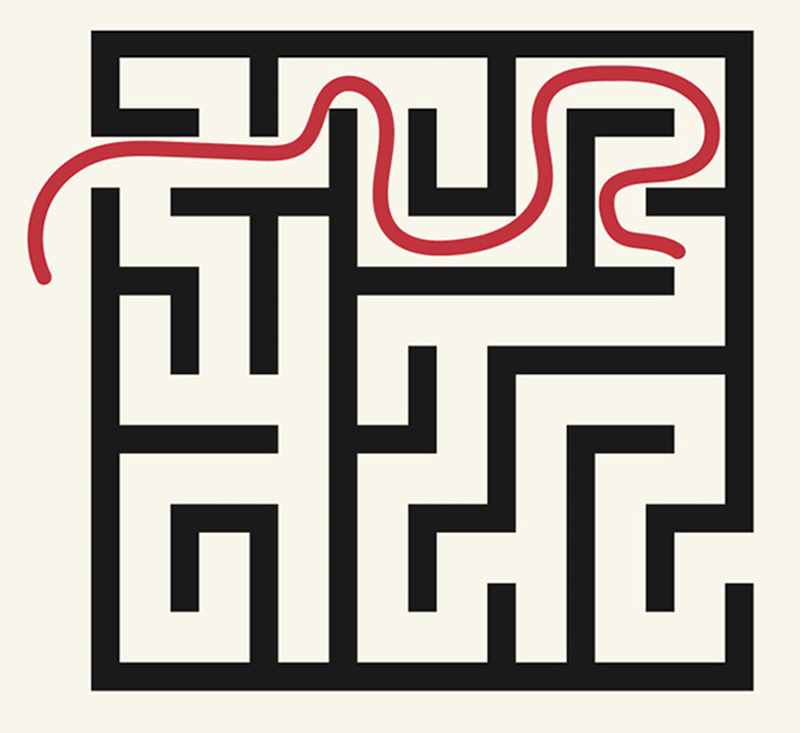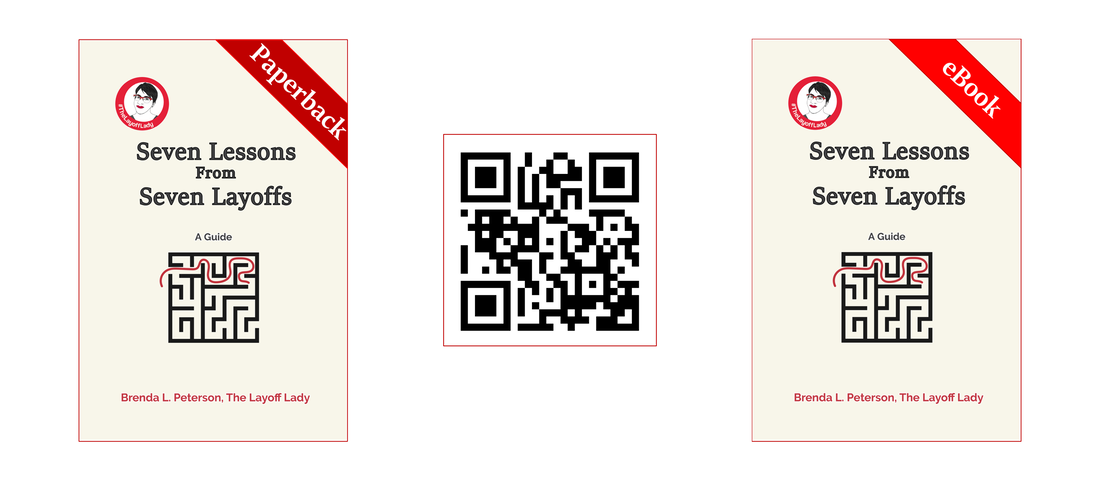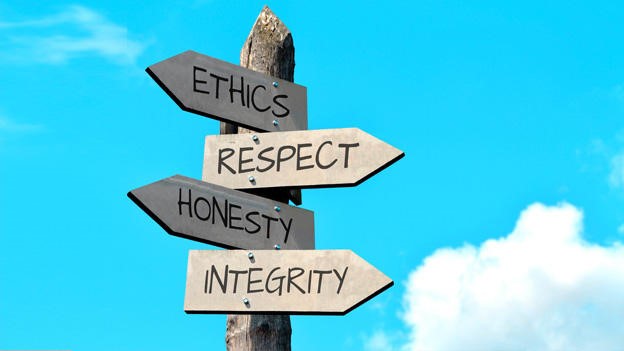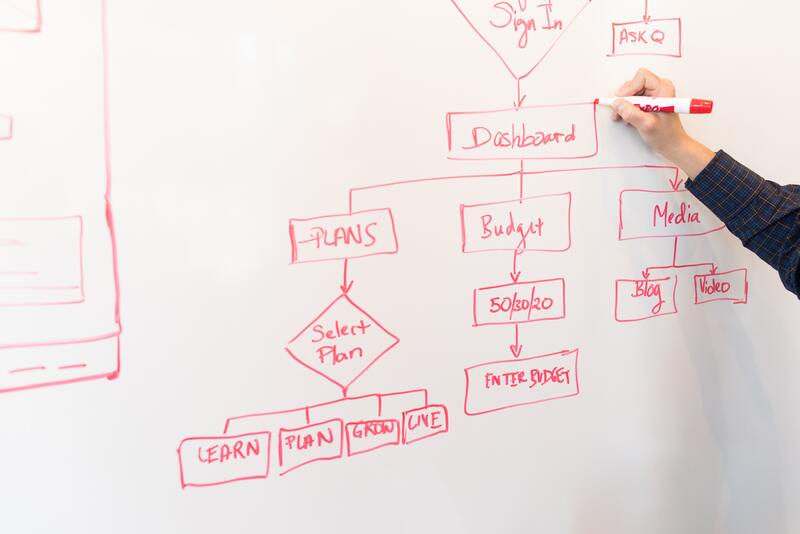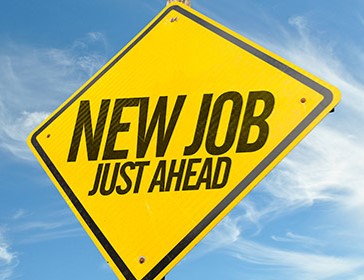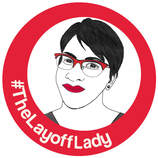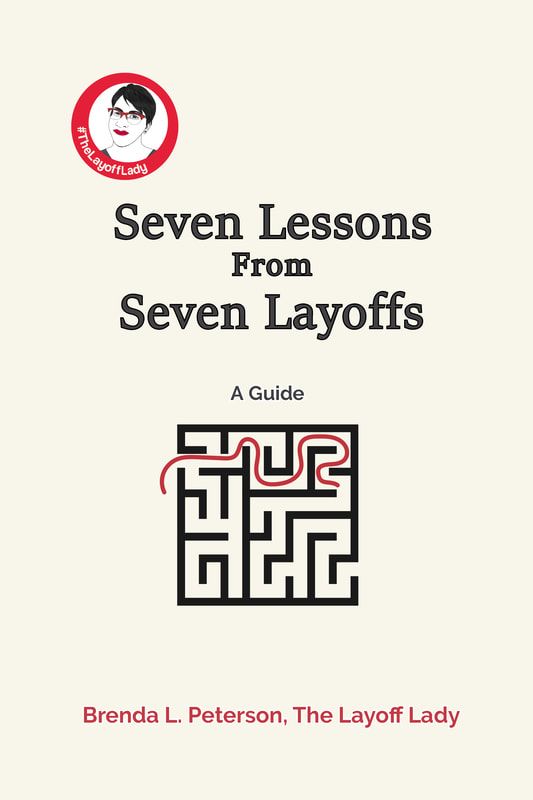|
by Brenda L. Peterson, The Layoff Lady Welcome To The SuckWhether you are in career transition and looking for a new job, or employed and looking for something new, job searching is always challenging--partly due to all of the uncertainty you'll face as you "wait for your life to start again" as you search for the next right role fro you. Suffice it to say that job searching can be full of obstacles that make the process hard to manage. Knowing the possible issues is the first step towards figuring out how to mitigate each challenge and move forward. Here are five unfortunate reasons I have discovered while working through job transitions and a few coping strategies for dealing with each. Reason 1: You Won't Always Interview For "The Perfect Job."Congratulations! You just found THE PERFECT JOB! You have all of the required and preferred qualifications! It's at the right level with your dream company, and you even know someone who works there who will say great things about you! Surely your days of job searching are coming to a close because you are the purple squirrel for THE PERFECT JOB! Enter reality. I'm sorry to say that you may not even manage to get so much as an initial phone screen for this position. Even when you feel like the job was tailor-made for you, it may not work out the way you want. Why might that happen? For one, the position may not actually be available. Some organizations post job openings to gauge interest in the position even though they have no solid plans to hire anytime soon. Conversely, the role may have been open for a while, and the selection process may be well underway. There could also be an internal person who will take the job without additional people being considered. In some cases, companies may have a policy that they need to post positions externally for a given length of time, even though they already have a candidate in mind. Still other organizations may decide part way through the hiring process to leave a position unfilled but not remove it from their posted jobs right away. Assuming the job is really, and for true accepting applicants, there may still be issues. For one, key organizational stakeholders may lack common agreement on what a job role will do and what constitutes being a well-qualified candidate. Decision makers may also each have their own non-negotiable requirements for the qualifications for the potential hire--which may or may not relate to the person's ability to do the job. Remember that no matter what the issue is, it seldom has anything to do with you personally. It's just the life of recruiting for and trying to fill positions with the best candidates they can find--sometimes with people who are (unfortunately) not you. Coping Strategies
Reason 2: People Who Aren't Great At Their Jobs Will Make It Hard.Remember a time at your last job when you had to deal with someone who was not great at what they did for a living? Like the rude salesperson who didn't do their paperwork correctly and caused you to lose out on a great deal? Or the manager who approved your time off request months ago, then decided to "unapprove" it a week before your vacation? During your job search, you'll realize those people exist in other organizations, too, and they sometimes stand between you and the job you want. It could come in the form of an administrative assistant who is supposed to coordinate your travel for an in-person interview--who didn't make reservations and then went on vacation, leaving you scrambling to find someone else to help. It might be the person conducting initial phone interviews who didn't realize that learning experience design and instructional design were the same thing and screened you out. It may even be an insecure possible future coworker who wants to avoid hiring someone who might outshine them. Like the rest of life, things are not always "fair." You may not get the job, even if you are a strong candidate. And so it goes. Coping Strategies
Reason 3: Along The Way, Someone Will Dislike You.I don't know about you, but I am friggin' delightful. I'm also able to connect and get along well with most people. However, during the interview process, no matter who I am or am not, it will not match what someone else thinks the candidate for the position should be. Whether they thought I should have smiled more, made a different outfit choice, or given more detailed examples, someone's negative reaction to who I am may take me out of the running for a job. People often have their own pet theories about what they'd like in a coworker, manager, or direct report. They may be convinced that having the title "account manager" is pivotal for success, that all candidates must have a master's degree, or that people who ride horses are pretentious. You might also have the misfortune of reminding them of the mean girl in high school and BOOM--instant dislike. Again, life isn't necessarily "fair." Coping Strategies
Reason 4. The Process May Be All Over The Place.The job interview process can be anything from one interview to many, many, many interviews, depending on the organization and the role. Typically, I expect to have a phone screen with an entry-level HR person to confirm that I can speak in sentences, an in-person interview with the manager and potential coworkers, and a final interview to demonstrate skills and/or meet with a company VP. In addition, a given employer may want you to do more to show that you have the skills necessary to do the job. For example, you might be asked to pass written assessments, submit work samples, present to a group or complete a project. They may even have you come into the office for the day and "work" as if you are already in the position you are applying for. Interviews could take place over the phone, via web conference, through email, in person, or (more likely) a combination of all of the above. Some companies will have a pre-defined, structured process for the pacing and format of interviews. Other organizations will appear to be making it up as they go along. You may also inadvertently skip steps and realize near the end of the process that you should have talked about a basic topic like salary range or work location. Sometimes, it may seem that the interview process is never-ending because you have yet to talk with every single person in the organization. Coping Strategies
Reason 5: Their "Fast" And Yours May Be Different.I remember being a child and how LONG the year seemed. It always took forever to get from my birthday at the end of August to Christmas. Enter adulthood. I find myself consistently marveling that it's already whatever day/month/season it is because it seems it was just that other day/month/season. In this scenario, your employer is the adult, and you are the child. Some companies will be motivated to fill positions and move quickly. In contrast, others might have days, weeks, or even months between your contact with them--all because something that wasn't filling that position became a priority. What about that two days the employer estimated it would take them to contact you? It may turn into a week or two. Since they're busy addressing customer issues, traveling to client sites, and doing their expense reports, they didn't even realize it took that long. Or, as any job seeker doesn't want to hear, you may not be getting the job. Responding to a candidate quickly usually shows that the potential employer is interested. In many cases, taking longer to respond may indicate lagging interest. Such is how the whole process works. Coping Strategies
Learn More
3 Comments
by Brenda L. Peterson, The Layoff Lady Adding Value Through CommunicationIt’s amazing how much of the job search process involves waiting to hear back and trying to communicate with the hiring team in a way that adds value. One easy way to strengthen your relationship with the hiring team is by sending a thank you note. While you could send a paper thank you note, I usually opt for a thank you email message given the prevalence of virtual interactions. But Why?During the interview process, your main goal is to position yourself as someone who would be an excellent direct report to the hiring manager and an awesome team member for your future coworkers. One easy way to be more likable is to be grateful and appreciative of people and their time. Sending a thank you email is a great way to do just that. Thank You Message BasicsSending a thank you message is another chance for your interviewers to see your name and have a positive experience with you. Who doesn’t like to be thanked for doing a thing? Here are key details to include in your post-interview thank you message:
Here’s the core content to include in a thank you message: Hi, Peter. Thanks so much for meeting with me earlier this week to discuss the Super Cool Support Manager position with Best Company Ever. It was great getting a chance to talk with you, Paul, and Mary about the support team and this opportunity. I am definitely interested in learning even more about the role. If you have additional questions, feel free to contact me via email at [email protected] or via text/phone at 555-555-5555. Thanks again! --Brenda Next Level Thank You Message MagicIn addition to the basic message, without writing a full-on manifesto, take the time to add a little more relevant information. This is an excellent opportunity to add more details and value to the interaction. This will also help make you more memorable. Here are a few suggested points to cover:
Here's what the message to the hiring manager might look like: Hi, Peter. Thanks so much for meeting with me earlier this week to discuss the Super Cool Support Manager position with Best Company Ever. It was great talking with you, Paul, and Mary about the support team and this opportunity. Learning about your new knowledge base and help desk ticket prioritization model was great. I’m excited to join an organization committed to documentation and continuous process improvement. As we discussed, here are a few relevant skills I bring to the table:
In addition, here is the link to the article I mentioned entitled “18 Knowledge Base Examples That Get It Right." Chapter 9 in this article covers some of the metrics we were discussing: https://www.helpscout.com/helpu/knowledge-base-examples/ If you have additional questions, please feel free to contact me via email at [email protected] or by text/phone at 555-555-5555. It was great getting a chance to talk with you—and I hope you have a great time on your fly-fishing trip this weekend! --Brenda Here's what a message to one of your future coworkers, Mary, might look like: Hi, Mary. It was great meeting you earlier this week to discuss the Super Cool Support Manager position with Best Company Ever. I enjoyed talking with you, Paul, and Peter about the support team and this opportunity. My experience working at Not Quite As Cool Company will help me add value to the team. I also hope you have fun on your upcoming trip to Minneapolis. As a fellow coffee lover, I suggest you stop at Dogwood Coffee Company. It’s honestly the best cup of coffee I’ve ever had and well worth the trip. It sounds like you’ll be staying not too far from their Northeast location. Here is the address: https://www.dogwoodcoffee.com/pages/locations If you have additional questions for me (professional or coffee related), feel free to contact me via email at [email protected] or via text/phone at 555-555-5555. Thanks again! --Brenda Thank You Note TimingI used to quickly send thank you messages right after I completed an interview. That way, the message would arrive in each person's inbox within a half hour after our conversation. Now, I wait until the next day, or even two days, to send the thank you. This puts time between our initial conversation and when they get this "remember me--I exist, and I'm awesome" message. Much like commercials, ads, or billboards remind you of the existence of a product or service you might want, I used my thank you messages as a second touchpoint with that person. Learn Moreby Brenda L. Peterson, The Layoff Lady Interviewing for a New RoleAs a many-time layoff survivor, I have done quite a few job searches and had lots of interviews. Not long ago, I read an article about a job searcher who opted out of one hiring process. He did this after making it through three rounds of interviews and having the organization ask about arranging the next six (yes, 6) rounds of interviews. I felt compelled to share my story about one seemingly never-ending interview process. Unfortunately, like with many things in life, it took a bad experience to teach me how to make better decisions. Job Interviewing Boundary Setting is HardLet me start by taking a moment to acknowledge that this is not always easy to do. It is hard to set boundaries when you’re hip-deep in a job search, especially when you’re unemployed. The longer the search goes on, the easier it is to tell yourself that you’ll summit Everest if a potential employer asks you to as part of possibly FINALLY getting a paying job. Consider this your reminder to realize that jumping through more and more hoops doesn’t necessarily mean that you’ll end up with a job at the end of the process. Do your future job-searching self a favor and think through what your boundaries are when it comes to participating in a given company's hiring process. (We'll revisit this a little later.) The Perfect Job! (or was it...)During this particular job search, I was laid off at the end of the summer. From previous job searches, I hoped to find a new position before Thanksgiving because otherwise, it might be until February or March before I secured a new role. I was very excited when I ran across THE PERFECT JOB! It was an opening for a training director position within an easy commuting distance where I even knew someone who had connections within the organization. Lesson Learned: Don’t fall in love with a job. Even if it seems like “the perfect job,” it is not yet “your job.” Apply, and hope for the best, but keep on applying. Until you have an actual accepted job offer, it is not “your job. The Inside ScoopI met with my professional connection, and they filled me in. I learned about the organization, their clientele, their mission, the key players in the hiring process, and helpful background information. My connection even put in a good word with the organization (they had left on good terms.) I also learned that the company had some turnover in this position, so they were trying to make sure they did their due diligence and hired the right person this time around. Lesson Learned: Gather and synthesize information even when you’re excited because you found THE PERFECT JOB. This company having gone through two people in the role in a relatively short time period and being concerned about making another hiring misstep is something I heard and noted. Still, I didn't really take it to heart. In this case, the company was trying (maybe a little too) hard to hire the right person for the role. It may have also indicated something about the company or the position that caused people not to stay. My future self knows to synthesize information more carefully--and not overemphasize only the good things. The Phone InterviewsI applied, and my connection put in a good word for me. The company quickly reached out to me for an initial phone screen. Then a phone interview. Then another phone interview. Then yet another phone interview. After four phone calls—each where the new interviewer seemed excited about me as a candidate and talked about who else I needed to talk to—I started to wonder what the game plan was for this whole process (aside from their overwhelming and often stated goal of not to make a hiring mistake). Lessons Learned: In the initial phone screen or the first interview, ask about the hiring process. This includes their estimate of when this process will be over (a week? a month? 6 months?) and the critical steps in the process. Decide your boundaries and be ready to decide the number of hours you are willing to dedicate to interviewing for this role. Remember, you are interviewing them, too. Make no assumptions. Don't get so excited that they keep wanting to talk with you that you keep going, not knowing how many hoops there are to jump through. The Work SamplesIn addition to talking to different interviewers on multiple occasions, the company wanted to see instructional design work samples from me. I emailed work samples and reviewed them with a subject matter expert who was well-versed in adult education and instructional design. They complimented me on the trainer guide, videos, and job aids I had created. They told me they were impressed with my work and learned from what I told them. At this point, they told me the next step was for me to meet with the company founder. Lessons Learned: Have a portfolio online that people can access, or let people know that you are happy to review work samples (and your process) with them in an in-person or Zoom meeting. I keep my work samples online with a note that these are intended to showcase my work and that they are not to be downloaded and distributed. The Zoom MeetingsI was excited to meet the company founder, who was also a published author. In preparation, I bought and read their most recent book, researched their accomplishments, read their blog articles, and reviewed their body of work. During the interview, we had a great conversation, which included a lot of “when we work together” and “next steps” language. This meeting was followed by multiple Zoom meetings with different stakeholders (again, one at a time) explaining the next steps in this process—which they called an “in-box experience.” During this phase, I would come into their office and work for a half day. I would have a chance to interact with multiple people I would work with, including consultants and a client. This would require me to sign a non-disclosure agreement, work on a project for an actual client, and present information to a client. Lessons Learned: No matter how many interviews you have, or how much they seem to like you, remember you do not have the job until they have made you an offer and you have come to an agreement about your compensation. Remember that the goal of this process is that the employer decides if they want to work with you, and you decide if you want to work with them. Looking back, I'm frustrated with myself that I invested SO MUCH TIME with this potential employer without talking about salary expectations. The In-Box ExperienceThe Wednesday before Thanksgiving, at 8:00 am, I arrived at the company's downtown office location for my in-box experience. I brought my computer and the work I had done so far. (BTW--there was a project and pre-work that I did, which took way too long. Holy time suck.) I was told that I needed to use their computer for my work that day. During the four hours that I was there working (for free) for them, I had an in-person panel interview with people I had talked with via phone, interviewed via Zoom with a consultant, ran a project meeting, completed work on instructional materials for a client, and got feedback on my performance along the way. I had a final conversation with one of the decision-makers before ending my day. I was told I'd hear back early the following week. Lessons Learned: Determine ahead of time how much you are willing to do for a role, and when to call it. Remember, you're interviewing them, too. And, for the love of God, don't do a ton of unpaid labor for a business that is not paying you for your work product. Thanks, But NoIn the middle of the following week, I got a call. It was very brief. Thanks for my time, but they had decided not to proceed with me as a candidate. If I like, though, they would be willing to add me to their possible consultant database for future contract work. Lesson Learned: Never again. In short, I spent about 45 hours total, including about 15 hours of unpaid work that I did for the company, to end up with no job offer. Time to transition all of these lessons learned into new personal guidelines. My Fancy New Job Search BoundariesRemember the boundary setting I mentioned before? Here's where we revisit it. After going through this process (and getting mad all over again while writing this article), I am reminded of the outcome of those lessons learned for me.
Learn MoreBy Brenda L. Peterson, The Layoff Lady About The Seven Layoff LessonsThrough my seven layoffs and many conversations with others in post-layoff career transition, I have learned seven core lessons:
About Layoff Lesson Four: Shape and Share Your StoryNow that you’ve determined what you want in your next role, your new challenge is learning to tell your story. This includes telling the overall story of who you are professionally and the value you bring. To this end, you'll use a few key documents to summarize what you do, highlight your core accomplishments, and persuade that employer that they should spend more time learning about you. Your Job Search ToolkitYour job search toolkit is the collection of information you need to showcase your value to a potential employer. Each item in this list helps you share a part of your story during the hiring process.
Your What I Want StatementBased on what you learned during your Structured Soul Searching, the next step is writing a clear and concise “What I Want Statement." This statement can help you as you review job openings and prioritize your applications to those that most closely align with your goals. This statement can also be repurposed when letting other people know what jobs interest you the most. Your Professional SummaryIn addition to your “What I Want” statement, you also need to be able to tell your career story. Your professional summary is that paragraph of quick-hit information that starts to outline who you are, your qualifications, and what you bring to the table as a candidate. This statement can also be repurposed when letting other people know what jobs interest you the most. Your Interview AnswersThe same stories you use in your resume to showcase your skills and the results they generate can also become the answer to commonly asked interview questions. Instead of answering with no plan and hoping for the best, you can use a model, like CARL or STAR, to structure your answers and get to your point more quickly. For The Whole StoryFor all the information on each of the seven lessons pick up a copy of my book Seven Lessons From Seven Layoffs: A Guide. Learn MoreBy Brenda L. Peterson, The Layoff Lady Learning About YourselfWhen thinking about the life you want to live, it's essential to start with what is truly important to you. Identifying those guiding principles will help you make decisions about how you budget your money, which people you will surround yourself with, and what type of work is right for you. Finding the words to express your values can help you live in alignment and increase your overall wellbeing. The Question: What is Important to Me?In the abstract, it can be hard to figure out what really matters to you. It's even harder trying to convert your thoughts and feelings into meaningful words that can help you express what is meaningful to you. Fortunately, there is a tool you can use to help you find the right words. Part of the Answer: think2perform Values ExerciseAt a previous job, when designing a retirement planning seminar, I discovered the think2perform Online Values Exercise. I take this assessment on at least an annual basis. Even though the words that resonate with me stay very similar over time, the process helps me revisit what matters to me most at that point in time. The assessment includes 51 value cards and four rounds of reviewing the cards. The total time to complete this activity is about 15 minutes or more, depending on how much contemplation you do. In the end, you'll have five value cards remaining with descriptions that name and describe key areas that matter to you. The Words You Choose May Change Over TimeI have completed this values exercise multiple times. My results vary depending on what is happening in the rest of my life right then. The words that have remained in my top five consistently over time are autonomy, relationships, and health. When lilfe has felt unpredictable, words like stability, security, and safety have moved up. Similarly, since work is such an important part of my life, there is always a word directly related to what I do for a living. In the past, terms like work, education, or helping others indicated what work meant to me at that time. Applying Your Values To Your LifeIn the final phase of the values activity, I thought very hard about which words were the best guiding principles for me. Here are the values that resonated with me this time around.
Applying Your Values To Your WorkBe sure to use your values as you consider the type of work you want to do and the workplace environment that will help you succeed.
What Do You Think?How do your values influence your career decisions? Share your thoughts in the comments. Learn MoreBy Brenda L. Peterson, The Layoff Lady About ReferencesWhen you’re getting ready to apply for jobs, at some point, those companies will ask for professional references. Some organizations will ask for references during the initial application. Other employers will ask as they approach the final stages of their interview process. Let's look at how you can select and communicate well with these people who you want to vouch for you and your skills. About Professional ReferencesYour professional references will speak well of you and help potential employers see your value. While personal references are generally people who can vouch for your character, professional references can share their experience with you in a work-related capacity. Typically, you'll need the names and contact information for three people who can share their experiences with you. Selecting Your ReferencesWhen selecting your professional references, here are a few ideas on who you may want to use:
Overall, it's helpful to find people who have worked for you doing relevant work (paid or volunteer) and who can attest to your skills. Here are a few of the people I have used a reference in the past:
Which References To UseWhen I apply for jobs, I have two references I use consistently.
Depending on the role for which I am applying, I will choose which other reference might be the most helpful:
Overall, make sure that your references can speak to your skills as they might pertain to the specific job. Information To IncludeMake sure to collect the following details on your potential references so you are ready to share it with possible employers:
Asking People To Be Your ReferenceBefore you start giving out people's contact information, be sure to confirm they are okay with being your reference. I suggest doing this before a specific job asks for references. I usually send them a message via email, LinkedIn, or text that reads something like this: --------------- Hi, [first name]. I'm launching my job search, and I'm wondering if you'd be willing to be one of my professional references. If so, please share the following contact information details with me:
Thank you so much for your assistance! -------------- The Heads Up MessageAfter you have their initial permission to give out their name as a reference, be sure to also inform them if they should expect someone to reach out to them. In addition to letting them know who may contact them and the type of position, it's also good to share a reminder of your previous work relationship so they aren't scrambling. Here is an example of that type of message. --------------- Hi, [first name]. Thanks for being willing to be my reference! I recently applied for a [job title] position with [company name]. I am in the final stages of their interview process, and they may contact you via phone or email. As a reminder, you and I worked together at [company] from [date range] when I was a [my job title] and you were the [their job title]. Thanks again for your help! --------------- Learn More
By Brenda L. Peterson, The Layoff Lady Rejection and Negative EmotionsBeing jobless post-layoff and searching for a new role is a rough process riddled with rejection. It starts with your former employer kicking you out of the whole company and, in essence, saying, “You are no longer one of us.” At every step of the way, you’ll experience people telling you no in a variety of ways. Here is how that rejection may look. Applying for a job and:
Having what felt like a great interview for a job and:
Receiving a job offer and:
Accepting a job offer and:
The Necessity of Experiencing Your Emotions Because of all of the uncertainty and rejection, this whole process can be a lot to bear. It’s hard to keep going when there are obstacles at every turn. Sometimes, even well-intentioned people trying to be supportive ask just the wrong question and make you feel even worse. Often, I find that when people are exceedingly negative, they usually have not taken the time to address their emotions. Consequently, those hard feelings fester, come out sideways, and interfere with the business part of job searching. Their complaining comes from a place of fear, pain, sadness, and anger. Unfortunately, as with much of life, it’s nearly impossible to complain your way out of your current situation and into a better one. Instead, it’s paramount that you experience your emotions, then manage your mindset so you don’t let your feelings make the already complicated process of finding a new job even harder. Coping StrategiesHere are a few ideas for strategies to help you work through the unpleasant emotions that will pop up during your career transition. Acknowledge Each EmotionBefriend your feelings. Don’t pretend that you don’t feel how you do. Name them, acknowledge them, and then move on. Pretending those unpleasant feelings don’t exist will not make them disappear. Instead, it may silence them for a bit, but they will pop up later, usually at the worst possible time. Acknowledging each one will help them run their course–and also help you to increase your ability to manage those feelings. Wallow a Little It’s impossible to will yourself into feeling better. Sometimes, you need to just sit with an uncomfortable feeling for a while and let it run its course. Cry a little. Rewatch your favorite movie for the bijillionth time. Have a little ice cream. Do a puzzle. Take a walk. Take the afternoon off from your to-do list. Some will run their course a bit more quickly than others. Research The ProblemIf you’re worried about something, researching answers and managing your expectations often helps. How many job applications does it typically take to get an interview? How long does it take most people to find a new role post-layoff? Which companies are hiring? You'll probably feel a little better by researching options, clarifying goals, and taking useful action. Even if you don’t find a complete solution, you at least know more. Having added knowledge will help you worry less or at least direct your worry toward taking productive action that will help you solve a problem. Take a Social Media BreakSocial media, specifically LinkedIn, can be a great job search tool. Unfortunately, it can also give you the illusion that everyone else is doing great and you are downright hopeless. Posts like “It only took me a week to find my dream job,” or “I’m still employed but I feel SO BAD for my former coworkers who are jobless,” or “Every company ever is doing more layoffs” will only make you feel worse. Remind yourself that social media isn’t real life and disengage. Leverage Basic Self CareWhen everything feels hard, taking care of yourself needs to be one of your top priorities. Here are a few quick and easy ideas to make you feel almost instantly better:
Learn MoreBy Brenda L. Peterson, The Layoff Lady Interview Progression IssuesAfter you apply for a job, your goal is to be selected for an interview. That process usually includes an initial phone screen, one or more face-to-face interviews, then a job offer. As you progress in your job search, it's important to take time on a regular basis to evaluate what you are doing and see if you need to modify your approach. Let's look at possible ways to proceed if you are not receiving callbacks from employers for initial phone screens. No Initial Interview InvitationsI’ve seen variations on the following LinkedIn post way too many times: “I’ve applied for 300 jobs over the last six months, and I have only gotten a couple of interviews.” Realize you won’t get a phone screen for every job application you submit, but you should be getting some. If you apply for even 20 jobs and don’t hear anything back from any of them, it’s time to reassess and figure out what you need to change to have more success. The first huge step in job searching is getting out of the virtual pile of job applications and into the much more selective “we gotta talk to this one” pile. Taking these steps can help. Step 1: Identify Your Target JobOften, people who struggle with getting job interviews need to revisit what they want in a job and target their job search toward that goal. Unfortunately, while applying for as many jobs as possible seems logical, it often backfires. Instead, job seekers who identify what they really want, then apply for those roles more closely matching their interests and qualifications get hired sooner. Step 2: Realign Goals and MessagingAnother problem shared by people who struggle with job searching is not talking about what they want, their work experience, and their most relevant qualifications. Ensure your resume has a strong Professional Summary highlighting the type of role desired and your value to your target role. Step 3: Focus on Fewer ApplicationsHow many applications should you do in a given week? Applying for 300 jobs over six months (26 weeks) is an average of 11.5 applications per week. That is A LOT. When I’m job searching, my weekly goal is three applications per week, and I could submit as many as six per week if I’m driven to apply for a few more roles that look promising. By focusing on fewer job applications, I increase my quality instead of relying too heavily on quantity. Step 4: Customize your Resume for Each ApplicationWhen I decide to apply for a role, I take 15-30 minutes per application to customize my resume. Taking this extra time to update my language helps potential employers understand how my skill set aligns directly with what they are looking for in a candidate. Ensuring the right keywords are present for an Automated Tracking System (ATS) and for the recruiter who initially reviews each resume will give you a better chance of being selected for a phone screen. To make these updates efficiently and effectively, I focus on two sections: Professional Summary and Skills & Competencies. Check out the Learn More section for additional information on strategies for customizing your resume. Learn More
By Brenda L. Peterson, The Layoff Lady Demonstrating Your SkillsEmployers are trying to find someone to solve the unique problems their business has. Recruiters and hiring managers will want to make sure that candidates have the skills and competencies included on their resume. Let's look at a few ways employers might verify candidate abilities during the hiring process. About Assessments and Work SamplesDepending on the company, the newness of the position, and the level of the role, there may be more to the interview process than talking with all the stakeholders. Potential employers may also ask you to complete projects to demonstrate key skills. Some employers may rely on your existing portfolio and review your previous work. In other cases, employers may ask you to complete specific work samples as a part of the interview process. This means completing unpaid work during the hiring process to demonstrate your skills as they more directly align with that role. In addition, they might ask you to complete assessments as well. My Experience With AssessmentsAs a part of a few hiring processes, I’ve been asked to take various tests to assess my tendencies, abilities, and aptitudes. Key focus areas often include problem-solving, strengths, work style, spatial ability, logical thinking, and temperament. For one role after layoff #7, the first two “interviews” with one organization were online assessments that compared my test results to a role-specific and company-specific ideal profile. For that job opening, I had 2 “interviews” like this and received a rejection email without interacting with actual people. For another hiring process, I took online exams on logical reasoning, general intelligence, and basic math before I was eligible for a phone screen. In some cases, assessments may be a prerequisite to meeting with a human interviewer or may be included later in the process to gather supplemental information right before making an offer. Concerns With AssessmentsWhile assessments have value, they may not help employers find a better candidate. Assessments can be useful when they are used to verify skills relevant to performing a specific position well. However, some assessments may be checking for skills not required for a given role. In addition, some assessments are not intended to be used during the hiring process and may introduce irrelevant or biased information into the hiring decision. My Low Time Committment ProjectsAs someone who works in the field of learning and development, I expect a potential employer to ask to see my portfolio. In many cases, during the application process, they will ask for a link to an online collection of work samples. On occaision, potential employers will ask for reccommendations on which of my work samples they should review more closely that align with the specific skills for any given role. I'm also ready to talk an employer through my work samples and highlighting my process in developing those materials. I also expect to be asked to demonstrate my ability to present content to a group. On many occaisions, I've been asked to deliver an interactive 10-15 minute presentation on the topic of my choosing to a panel of interviewers. For a manager role, I've often been asked to put together a 30-60-90 day plan outlining my initial onboarding and how I would identify and prioritize projects. My High Time Committment ProjectsAs I’ve progressed into higher-level roles, the projects have become more time intensive and elaborate. Here are a few examples: For a consultant role, I was tasked with creating an innovative plan for employee onboarding for new contractors and full-time employees. For this project, I designed a pitch deck to garner buy-in from stakeholders on the solution. I delivered that presentation to a group including the hiring manager, additional managers, and team members. I also designed a blended learning solution that leveraged subject matter presenters and accommodated people having distributed locations and start dates. For a manager role, in addition to a 30-60 day onboarding plan for myself, and created a list of equipment, software, subscriptions, and additional resources needed to begin creating videos for the company. For a program manager role, I was tasked with creating an innovative onboarding program to teach new full-time staff about company products. I designed a new hire career fair with multiple tables showcasing different products, complete with a passport for trainees to collect stamps. Those trainees who visited each table and filled out their passports were enrolled in a prize drawing for a bigger company-branded prize. For a director role, during the initial application, I answered several essay questions along with my resume and a cover letter. Later in the interview process, after taking two professional assessments, I was also tasked with completing these three projects:
Concerns With ProjectsUltimately, I did not receive job offers for any of these roles where I completed more elaborate work samples. I also found it frustrating to be tasked with what ended up being hours and hours of skilled work without being compensated, or ending up with a job offer. In the abstract, I’ve seen many people bluster on social media about what they won’t do as part of an interview process. I also don’t necessarily disagree with the boundaries those people suggest. I do know that making that decision feels much different in the throes of job searching. When being asked to do a few projects to help you get a job you think you’ll love, it’s often hard to say no. Here are a few suggestions I have for deciding what you personally are willing to do as a part of the interview process. Strategies to Adapt
Learn MoreBy Brenda L. Peterson, The Layoff Lady I Found a Job!After 9 months of career transition, I am gainfully employed again! I'm excited to be working in an amazing organizational development role. Each layoff and subsequent job search brings its own challenges. Take a look at my lessons learned from this time around. New Challenges
My Post-Layoff Transitions: DurationPeople often ask how long a career transition lasts. To give a partial answer to that question, here is my unscientific, skewed-sample-size data on how long each of my periods of post-layoff career transition have lasted. The time listed starts with my last day of work with my previous employer (aka "Layoff Day") and ends with my first workday in a new role:
Overall, my average time in career transition is 128 days (just over 4 months). Layoff #7 was the longest one I've had so far, and 3 months longer than my previous record. Career Transition Duration: Contributing FactorsThere are a few key factors that made this period of career transition longer than after my previous layoffs:
The Numbers: Job Applications and InterviewsGiven that my previous employer was starting to make organizational changes, including a few rounds of "quiet layoffs," I started to keep an eye out for a new job starting in July of 2022, which I've included in this summary:
The Insights: More Opportunities, Fewer InterviewsOne challenge during this job search is the newly added focus on work location--specifically the following labels: onsite, hybrid, and remote. Part of why I felt comfortable relocating from Minneapolis, MN to Omaha, NE in mid-2022 was the prevalence of remote work. I also realized that the definition of "remote" for companies can vary widely. As I reflect on my job search, I wonder how many positions I applied for with companies who were not interested in or able to hire someone who lives in my current state of residence. While there are, indeed, many remote jobs available in my chosen field of learning and development, I discovered first-hand that companies and job search sites are not necessarily aligned on what each of these words means. Remote jobs mean more applications for me and way more competition:
The Numbers: Working With RecruitersRemember, LinkedIn is your billboard to the world. Be sure to make your profile a good representation of what you bring to the table as a job candidate. Have a strong headline that includes the job title(s) that interest you and a few key skills. Have your professional summary in the About section, your work experiences, and at least a couple of sentences about each of your previous jobs. This is what recruiters will check after you apply. This is what may come up in a recruiter's search when they are sourcing candidates. Make this count. Here are the responses from recruiters this time around:
My Re-Launched Job SearchIn April, when I re-launched my job search, I changed my overall approach.
At this point in my job search, I had also built stronger relationships with my colleagues in my Omaha-area professional development groups. When I first launched my job search in the fall, I had only been in the area for 2 months. Between then and April, I had met more people in person, talked with them in meetings, presented to groups, and helped a few of them solve business problems. I'm sure getting to know me better and working alongside me helped them to feel more comfortable speaking to my skillset and recommending me as my job search progressed. My Overall Insights
Learn More
|
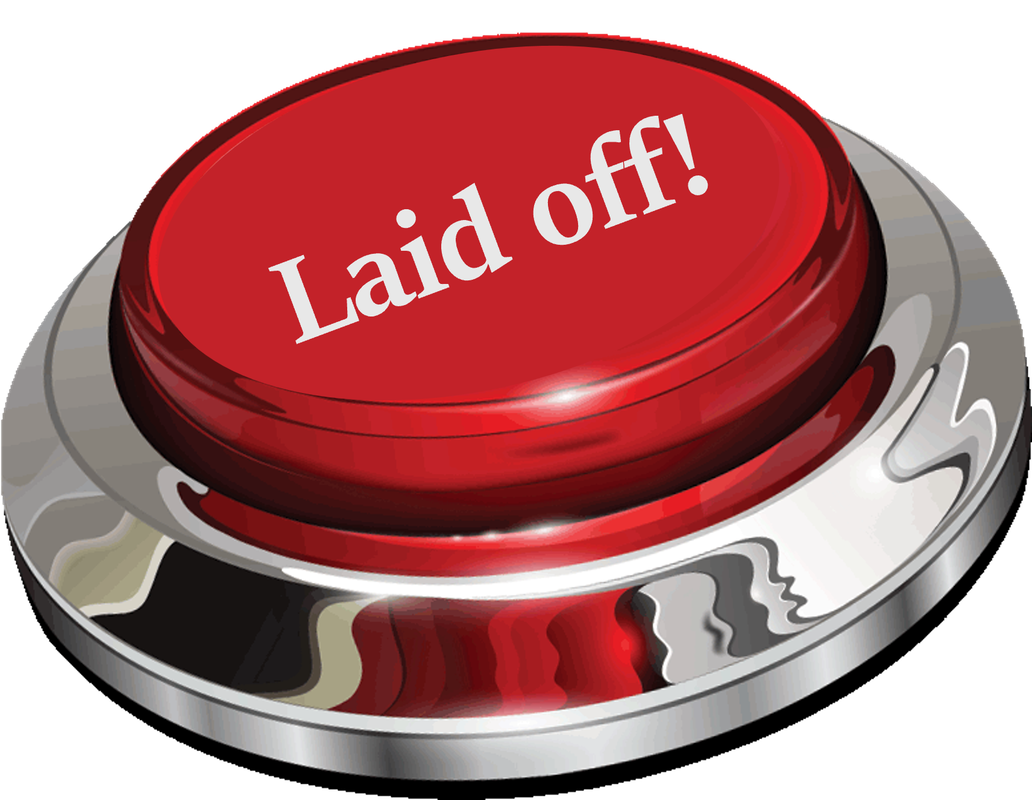
Just get laid off?
Click here for info on what to do first. Author7-time layoff survivor Brenda L. Peterson, The Layoff Lady, waxes poetic on layoffs, job transitions, & career resilience. Buy The Book!Were you recently laid off from your job and need a roadmap for what's next? Pick up a copy of my book, Seven Lessons From Seven Layoffs: A Guide!
Categories
All
Archives
July 2024
|








